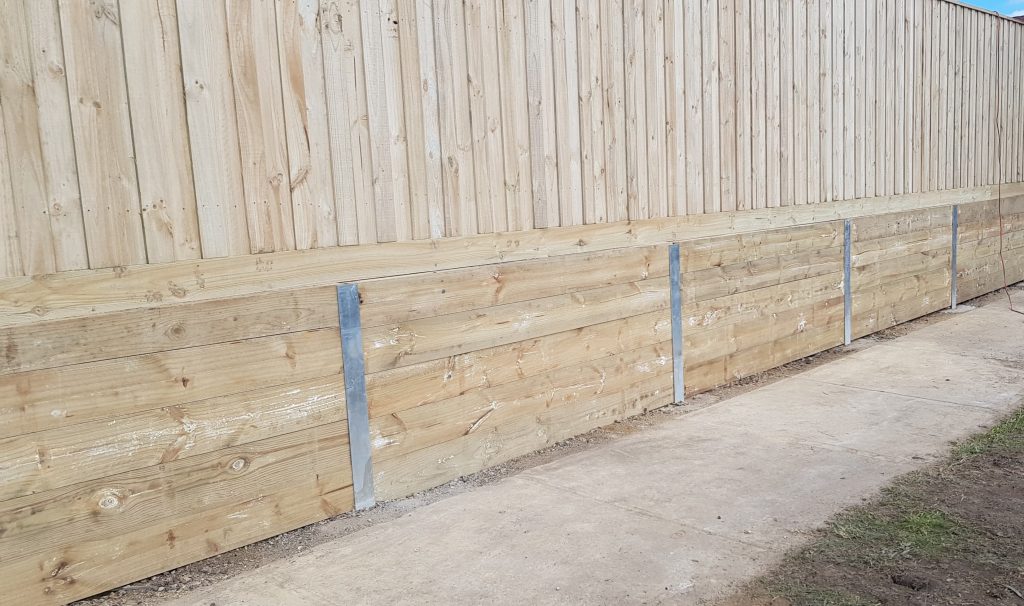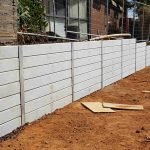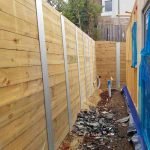Introduction
Retaining walls are more than simple structures; they embody the artistry of engineering and design. When we think of transforming our landscapes, maintaining walls frequently function as critical elements that not only support the ground however likewise enhance the visual appeal of our yards. The journey from a preliminary idea to a magnificently developed retaining wall can be intimidating. Nevertheless, with the ideal proficiency and imagination from professional builders, this vision can seamlessly become reality. In this comprehensive guide, we'll check out every element of working with creative retaining wall home builders, diving deep into products like timber sleeper, concrete sleeper, and H beam constructions.
From Vision to Truth: Working with Creative Retaining Wall Builders
What Are Maintaining Walls?
Retaining walls are structures designed to keep back soil and prevent erosion. They have a range of applications, from landscaping aesthetics to necessary structural integrity in hilly terrains. These walls can be made from numerous products including concrete, timber, stone, and even gabions.
Why Pick Imaginative Retaining Wall Builders?
When it concerns building a retaining wall, picking the right builder is important. An innovative contractor does not simply focus on functionality; they likewise think about how the structure will blend with your landscape. This guarantees that your vision is not only realized but elevated.
Understanding Different Types of Keeping Walls
Gravity Walls
Gravity walls count on their weight to resist soil pressure. Normally made from heavy materials like concrete or stone, these walls are straightforward however need significant space.
Cantilever Walls
These walls utilize take advantage of for stability. They are normally made from strengthened concrete and work well for taller structures.

Anchored Walls
For scenarios where additional assistance is required, anchored walls are perfect. They use cables or rods anchored into the earth behind them to supply additional resistance.
Materials Utilized in Retaining Wall Construction
Timber Sleeper Walls
Timber sleeper keeping walls use a rustic charm and are perfect for garden landscapes. Their natural look mixes magnificently with outdoor settings.
- Advantages: Affordable and easy to install. Disadvantages: Susceptible to rot if not treated properly.
Concrete Sleeper Walls
Concrete sleeper walls supply durability and strength. These precast panels come in various designs and colors, allowing for customization.

- Advantages: Lasting and low maintenance. Disadvantages: Higher in advance cost compared to timber.
H Beam Walls
H beam http://felixqepd366.theburnward.com/retaining-wall-installer-vs-home-builder-comprehending-the-differences retaining walls integrate modern-day engineering with aesthetic appeal. H beams provide exceptional stability while permitting innovative designs.
- Advantages: More powerful than conventional materials. Disadvantages: Needs professional installation due to complexity.
The Design Process: From Conceptualization to Implementation
Initial Assessment with Your Builder
The initial step in developing your retaining wall involves a preliminary assessment where you share your vision. This is where imaginative builders shine; they'll listen thoroughly to your concepts and suggest practical solutions based on their experience.
Site Assessment and Recommendations
A professional contractor will perform a comprehensive website assessment before any building starts. They'll assess soil conditions, drainage patterns, and other factors that could affect the project's success.
Designing Your Maintaining Wall
Once evaluation information are gathered, the design phase starts. Expect discussions around product options-- whether you prefer wood sleepers for a rustic appearance or concrete sleepers for resilience-- and how these options will affect both spending plan and aesthetics.
Building Regulations and Permits
Understanding Regional Building Codes
Before construction starts, it's essential to comprehend regional building regulations regarding retaining wall building and construction. Numerous areas have specific guidelines worrying height limitations, setback requirements from residential or commercial property lines, and drains systems.
Acquiring Required Permits
Professional home builders normally manage permits as part of their service plan. However, it's still excellent practice for homeowners to familiarize themselves with what permits may be required for their project.
Construction Phase: Bringing Your Vision to Life
Preparing the Site
This involves cleaning vegetation and particles from the construction location while making sure minimal disturbance to surrounding environments-- an important stage dealt with effectively by professional builders.
Foundation Work
A strong structure is crucial when constructing any retaining wall type; this step varies based upon selected products (concrete sleepers versus wood). Builders make sure that footings fulfill engineering standards before progressing further.
Wall Assembly Techniques
Different approaches apply depending upon material choice:
- For timber sleepers: Appropriate anchoring methods should be used. For concrete sleepers: Setup requires lifting equipment due to weight. H beam installation requires accurate positioning for structural integrity.
Finishing Touches That Make a Difference
Landscaping Around Your Retaining Wall
After building and construction is complete, think about landscaping choices around your new wall. Plants can soften its look while enhancing drainage-- developing a welcoming atmosphere in your yard!

Maintenance Tips for Longevity
To ensure your retaining wall lasts through seasons:
Regularly check for fractures or indications of wear. Clean any particles build-up around drain areas. Add soil or mulch periodically as required for stability against erosion pressures over time.FAQs About Dealing with Creative Retaining Wall Builders
What Is The Typical Cost Of Structure A Maintaining Wall?
Costs can differ considerably based upon products utilized (lumber vs concrete) along with style complexities-- typically varying from $15-$50 per square foot depending largely upon local labor costs as well!
How Long Will It Take To Build A Keeping Wall?
Typically speaking-- most projects take anywhere between 1 week-- 1 month depending on size/scope included! Larger projects require more time due too extra preparations needed ahead of time so always seek advice from directly!
Can I Construct My Own Maintaining Wall?
While do it yourself choices exist especially utilizing lighter products like lumbers-- more intricate structures require experts experienced in structural engineering best practices guaranteeing safety & & sturdiness throughout lifespan!
What Maintenance Does A Timber Sleeper Wall Require?
Timber sleeper walls require regular examination especially after heavy rains or snowmelt periods inspecting footing stability & & treating wood surface areas versus rot/mold buildup remains vital maintenance aspects!
Are There Eco-Friendly Options For Structure A Retaining Wall?
Yes! Numerous companies now offer recycled products as options consisting of recovered wood items alongside sustainable sourcing practices promoting greener structure methodologies overall!
Conclusion
Transforming your landscape through a wonderfully built retaining wall doesn't need to be overwhelming when you work with proficient experts who appreciate both artistic style principles along with technical knowledge! By understanding various types-- from lumber sleepers & & concrete alternatives right down through ingenious h beam options-- you'll discover precisely what matches best within individualized visions turning dreams into concrete truths! So why wait? Begin checking out how creative retaining wall builders can help bring YOUR special outside goals alive today!